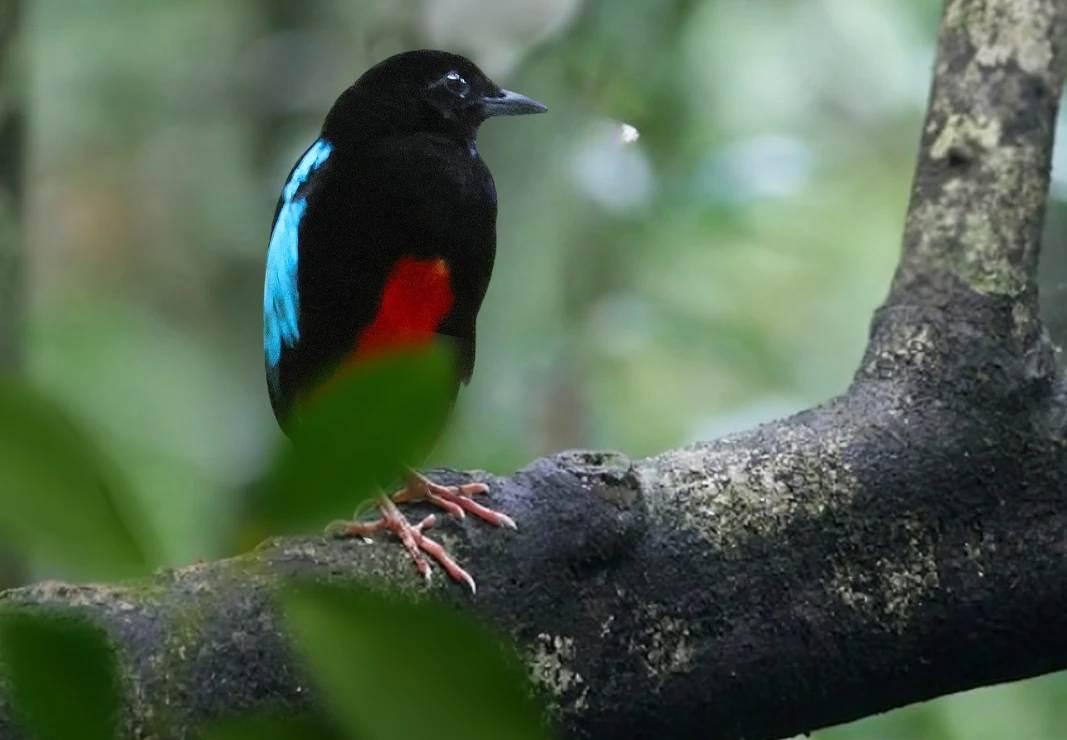Curious Life Of Maleo Birds
Home › Curious Life Of Maleo Birds
Maleo Birds of Sulawesi, Indonesia
Birds lay eggs and brood over them until they hatch. That much is common knowledge. But the Maleo, found only on Sulawesi Island in Indonesia, breaks that rule completely. Rather than incubate their eggs, Maleos bury them in the sand and walk away. For a bird, that is highly unusual. The facts about this ground-dwelling species are nothing short of remarkable.
I first learned about Maleo birds years ago from a BBC Earth programme. But I only saw them in the wild in 2018, during a classic Sulawesi and Halmahera birding tour. I was travelling with a group of wildlife photographers. Our focus was on the unique birds and mammals of these two endemic-rich islands. After a few days in North Sulawesi, exploring Tangkoko National Park, we flew from Manado to Tuwuk in Central Sulawesi. From there, it was a long drive to Taima on the Tompotika Peninsula, where a Maleo conservation project has been running for years.
We reached Taima late at night. The village had only basic facilities—two tin-roofed sheds by the sea. After checking every corner of the hut with headlamps for sea snakes and other unwelcome guests, we tried to get some rest. But sleep did not come easily. The air was thick with humidity, and most of us lay awake, distracted by the sound of wind over the ocean and the flicker of torchlight as someone else got up for a second round of snake-checking.
By morning, everything felt different. The air had cooled, and we set off to the hide well before sunrise. It was a simple setup, built to hold about ten people, and looked out over a narrow beach flanked by dense undergrowth. We waited in silence. Just after first light, the forest stirred. One by one, Maleos stepped out onto the beach and began to dig. They worked with an energy that was almost mechanical, kicking clumps of sand metres behind them as they prepared nesting sites.
That morning, we saw three pairs. Each stayed over an hour, tirelessly clearing the sand, laying a single egg, then filling in the hole before vanishing back into the forest. The process was as fascinating as it was methodical.
What makes the Maleo unique is its approach to parenting—or lack of it. Rather than sitting on the egg, the bird relies on the heat of the sun. The eggs are buried deep in sun-warmed sand and left to incubate naturally. The parents do not return. When the chick hatches, it does not need help. Within hours, it claws its way to the surface, fully feathered, able to run, and even fly a short distance. From birth, it is on its own.
Endemic Explorer has been leading birding expeditions across Indonesia since 2016, with journeys through Sulawesi, Halmahera, West Papua, and other regions rich in endemic species. Our tours are designed for birdwatchers and photographers looking to experience rare wildlife like the Maleo in its natural environment.
To learn more, visit www.endemicexplorer.com/indonesia.
Latest Post

Papua New Guinea Bird Photography Tour Report – 2024

Chasing the Super Pitta: A Journey to Manus Island

